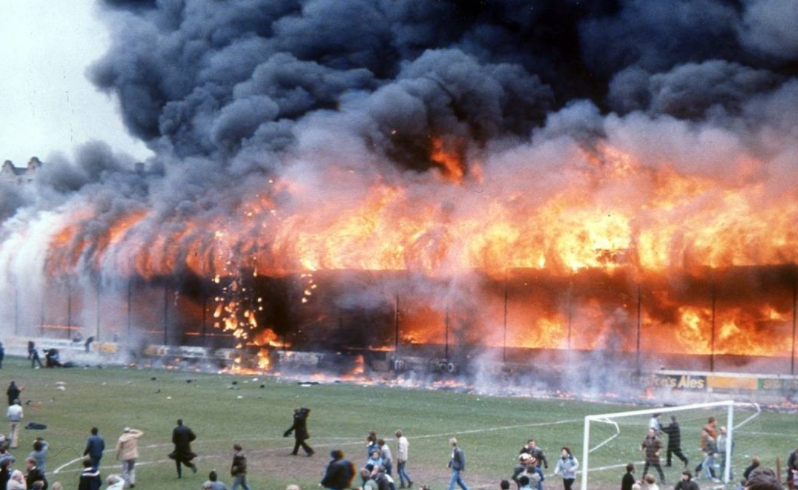The Weekly Reflektion Week 02 / 2021
The antiquated wooden stand at the Bradford City football stadium, Valley Parade caught fire in May 1985. 56 people were killed, and 265 injured while watching a football match.
Not doing anything is inexcusable when signals are clear. How receptive are you to such signals?

On 11 May 1985, Bradford City had just won the 3rd Division Championship in England and were playing Lincoln City in the last home game of the season. The Championship Trophy,the first piece of silverware for 56 years for the club, was to be handed over before the game, and because of this, the crowd of 11,076 was almost double the seasons average. 3000 people were sitting in the main stand.
The stadium was antiquated, designed in 1908 with a wooden stand, weather protected with bituminous roofing felt. The club had been warned by the county council of a build-up of litter beneath the main stand, where rubbish fell between gaps in the seats. This warning was repeated in July 1984 with a requirement that this ‘problem should be rectified as soon as possible’ as a ‘carelessly discarded cigarette could give rise to a fire risk’. The stand was eventually condemned by the council. In March 1985, the football club took delivery of steel to build a new main stand, because the present stand was due for demolition immediately the season was over.
About 5 minutes before half time, there were the first signs of a fire beneath the wooden seating in the main stand. It was seen on live television and was spotted almost immediately. No fire extinguishers could be found, so the police took the decision to evacuate the main stand. In windy conditions, with a massive amount of dry wood, the main stand was totally engulfed by fire within 4 minutes. Most were evacuated straight onto the pitch, where there was no fencing that could prevent escape from the stand. Those caught at the back of the stand found themselves behind locked exit doors. The bituminous roofing felt was melting and dripping down onto those trapped below, as well as falling burning timber. The fire brigade arrived withing 4 minutes but could not fight the source of the fire as many fans still needed rescuing from the stand. Some of those who died were found still sitting upright in their seats.
The inquiry found that the club had given very little thought to fire precautions despite repeated warnings, and recommended that new wooden grandstands should be banned, and those still in use be closed immediately. It was also recommended to ban smoking in football stadiums. Bradford City football club was found responsible for not following the fire regulations and the city council were held responsible for not enforcing the fire regulations. It also found that no one person was responsible for the safety of the premises in the club’s organisation. Roles and responsibilities were unclear. Over £20 million was paid out in compensation to the victims’ families.
Most major accidents are preceded by signals, for example the warning given by the council about the litter beneath the stands. Do you ignore signals in your operations? The council did not ensure their warnings were heeded. How do you ensure that the actions you recommend achieve what you are trying to accomplish?
